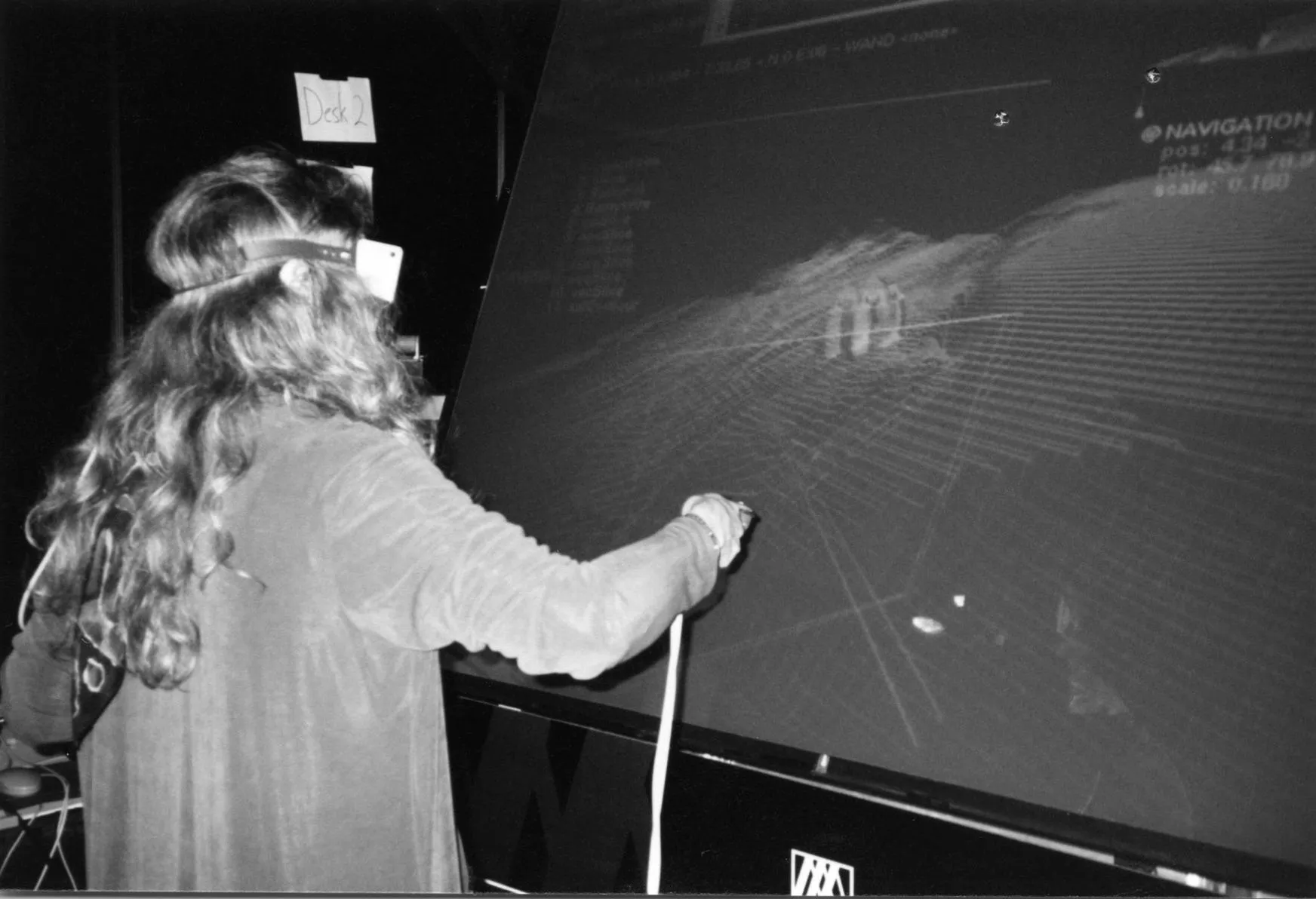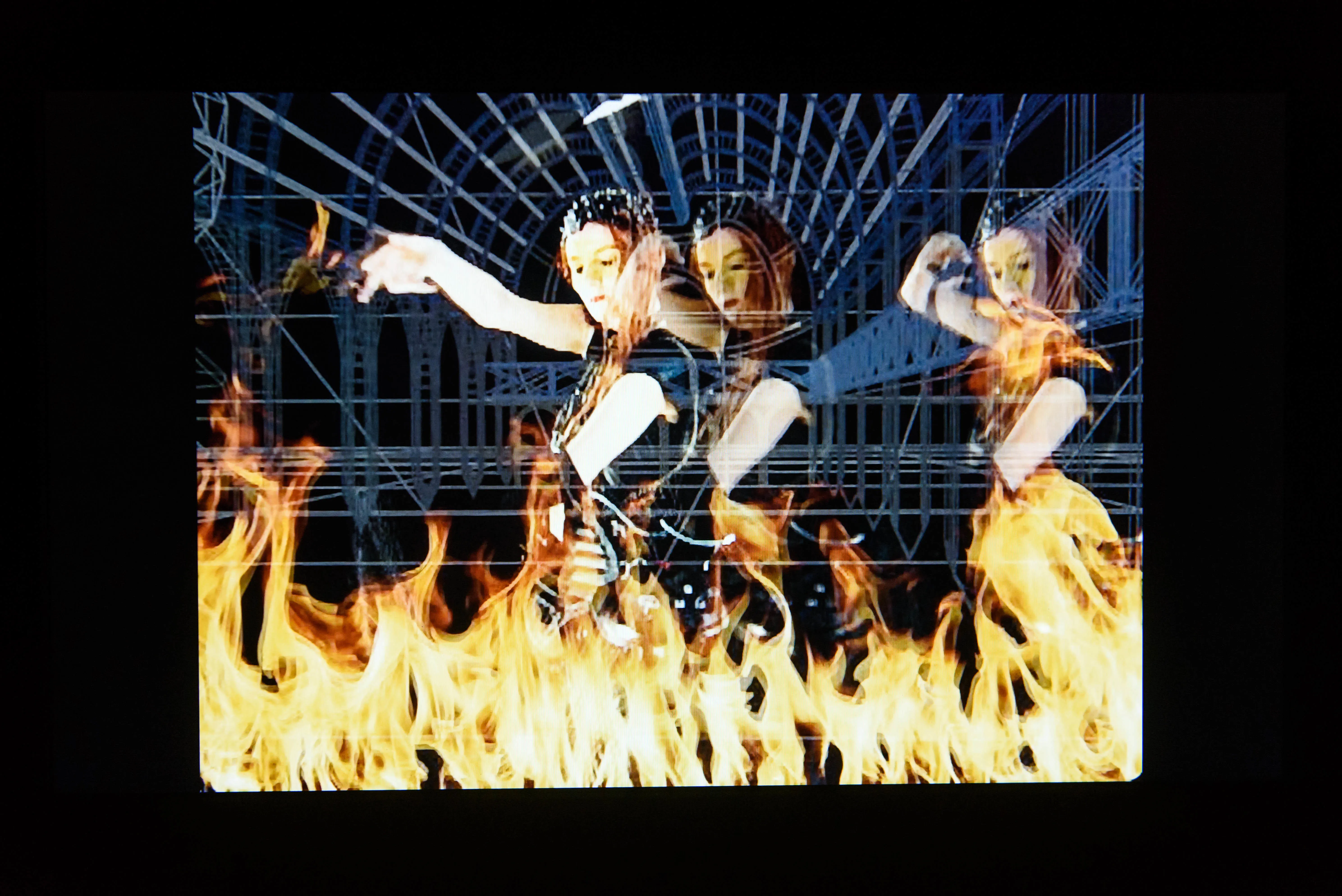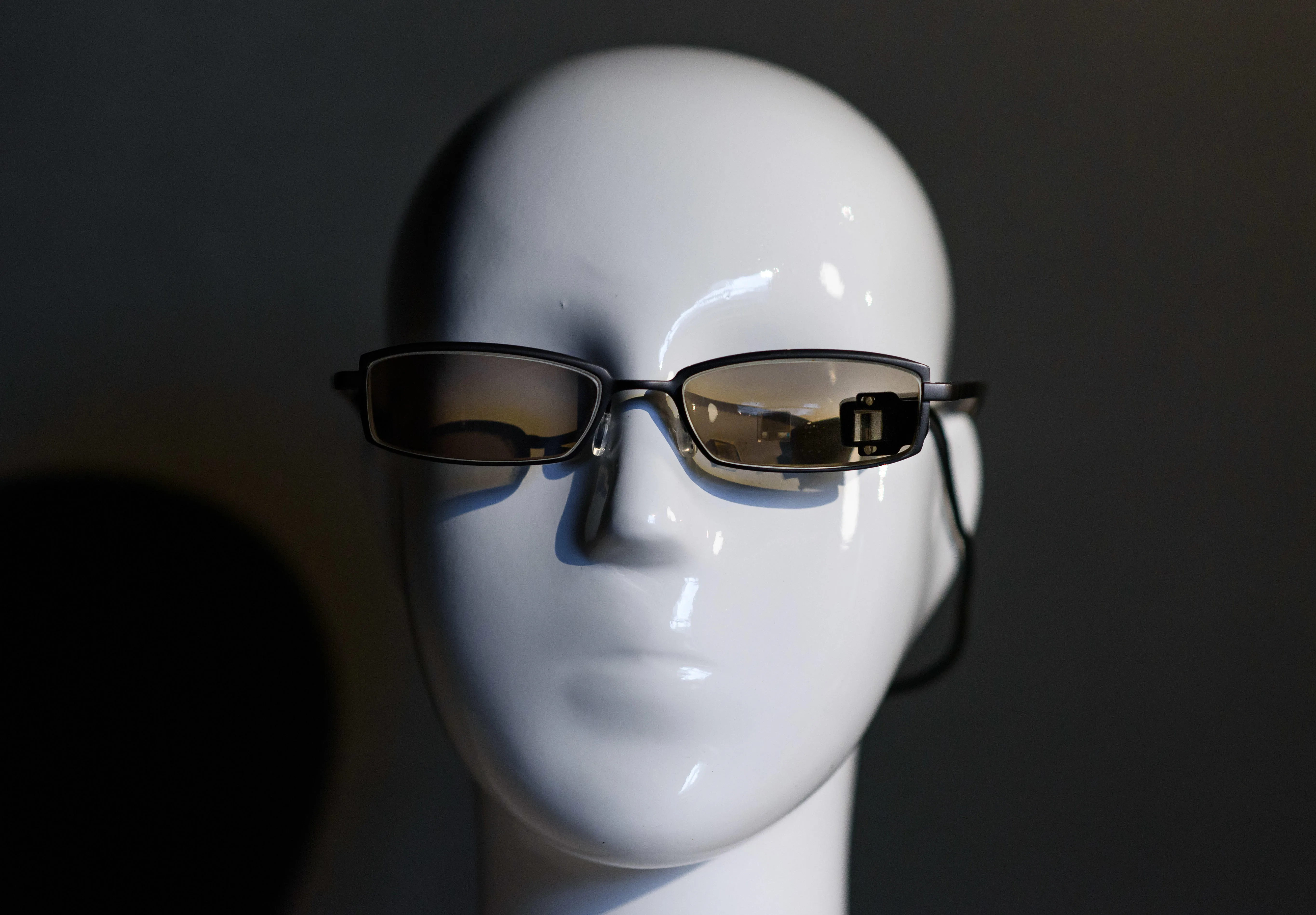The Curiosity Cabinet: GLOW: Illuminating Innovation

In the 1980s, artist Ellen Sandor began creating immersive digital installations which she refers to as the daguerreotypes of virtual reality. She coined the term “PHSCologram” [scol-o-gram] to describe these computer-generated images that combined elements of photography, holography and sculpture. These early experimentations of using virtual cameras in digital environments are the foundational basis of today’s ‘CGI’ productions.

A team headed by Tamiko Thiel designed the appearance of the Connection Machine, the first commercial supercomputer created for problems of AI. The conceptual design of the supercomputer’s form drew on Nobel Physicist Richard Feynman's design for the internal routing network in the form of a 12-dimensional hypercube, as best exemplified by the logo that Thiel designed.

Nicole Stenger created 'Angels' – the first immersive ‘Virtual Reality movie', a real-time interactive experience. One of the first artists to explore the artistic virtual reality medium, her works have been featured in the SIGGRAPH Art Show, the FILE Festival, the JavaMuseum, the Cartier Art Foundation and are part of the Archive of Digital Art (ADA). In 2013, she was included in the "Contemporary women artists on the web" collection of the National Museum of Women in the Arts, in Washington, D.C.

Minsky’s research into haptic technologies provided the foundations for tactile feedback in virtual environments, now used in gaming and immersive experiences. This collection of objects documents the development of the first technique for creating haptic textures, a Lateral-Force Algorithm, which Minsky undertook as part of her doctoral research at the MIT Media Lab.

Cox co-created Virtual Director – the first VR camera-choreography system referenced by many other patents including from Google, Pixar, IBM, Sony and Autodesk. The first Virtual Reality camera-choreography system, Virtual Director is referenced by many other patents including from Google, Pixar, IBM, Sony and Autodesk and is the earliest realisation of today’s much-hyped ‘Virtual Production’ systems.

Dove's Artifical Changelings was a very early iteration of video motion sensing that is now very a familiar technology in computer game systems. Artifical Changelings was an interactive laser disk and sound installation that used motion sensing to track the location and movements of a viewer standing in front of a dimensional rear projection screen.

Claudia Hart has always been at the forefront of experimentation with virtual imaging, using 3D animation to make media installations and projections. The 4 photographs of “E” which integrate 3D elements are from a larger series depicting the first virtual supermodel (a claim much made later by others). “E” represents the condition of the contemporary woman in today's postindustrial, technological society.

Allen's created MyoPhone in 2003, whcih sparked Google founders' interest in thinking about eyeglass displays, which later led to the invention of ‘Google Glass.' MyoPhone is an ‘intimate interface,’ in which the user wears a pair of eyeglasses with a display embedded in the eyeglass lens and a LED in each corner of the frame.

The Prototype VR headset from Hunger in LA VR experience was used to show this piece when it premiered at the Sundance Film Festival in 2012 and enabled “walk-around VR” for the first time. It was also around this time that de la Peña coined the term and inaugurated the medium of “immersive journalism”.
